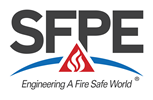FEMTC 2022
Challenges In Train Evacuation Modelling Using Pathfinder 
Pavel Hrabák - Czech Technical University
Abstract
In comparison to buildings, public transportation vehicles including passenger trains represent specific environments typical for cramped interior layouts with narrow aisles, limited number of exits, and various operation conditions resulting in non-standard exit paths such as direct egress to the track level. Therefore, in evacuation modelling, safety analysis of passenger trains may denote a challenging task, especially when using evacuation models originally developed for simulations of evacuation processes from buildings (such as Pathfinder). In this case, several issues can be encountered: lack of validation against relevant experimental data, missing features to simulate non-standard exit path, lack of knowledge which key parameters to adjust and how.
This contribution addresses these issues while performing an egress simulation analysis of a rail car of double-deck electric unit class 471 (CityElefant) using Pathfinder. The analysis was based on a full-scale controlled evacuation experiment carried out in Prague in 2018. We introduce a technique for adjusting the Pathfinder model that simulates rail car egress to match the experimental results, and we include sensitivity analysis of key parameters influencing total evacuation time (TET).
From the obtained results several conclusions can be drawn:
- Application of the SFPE curve for a speed-density relationship had a significant impact on TET due to narrow aisles and limited space available;
- The parameters of agent diameter and squeeze factor have to be handled together (when associating the agent diameter with the width of passenger shoulders, the value of squeeze factor must be decreased);
- While egressing to the track level, the time delay caused by the preparation and realization of the jump must be implemented adequately to different passenger abilities;
- The impact of seating preferences of passengers with heterogeneous moving abilities prevails the influence of maximal speed or diameter distribution on TET.
Presentation
Resources
| Paper | Presentation | ||
|---|---|---|---|
| HTML | HTML | ||
| Resources Archive File (.zip) | |||

